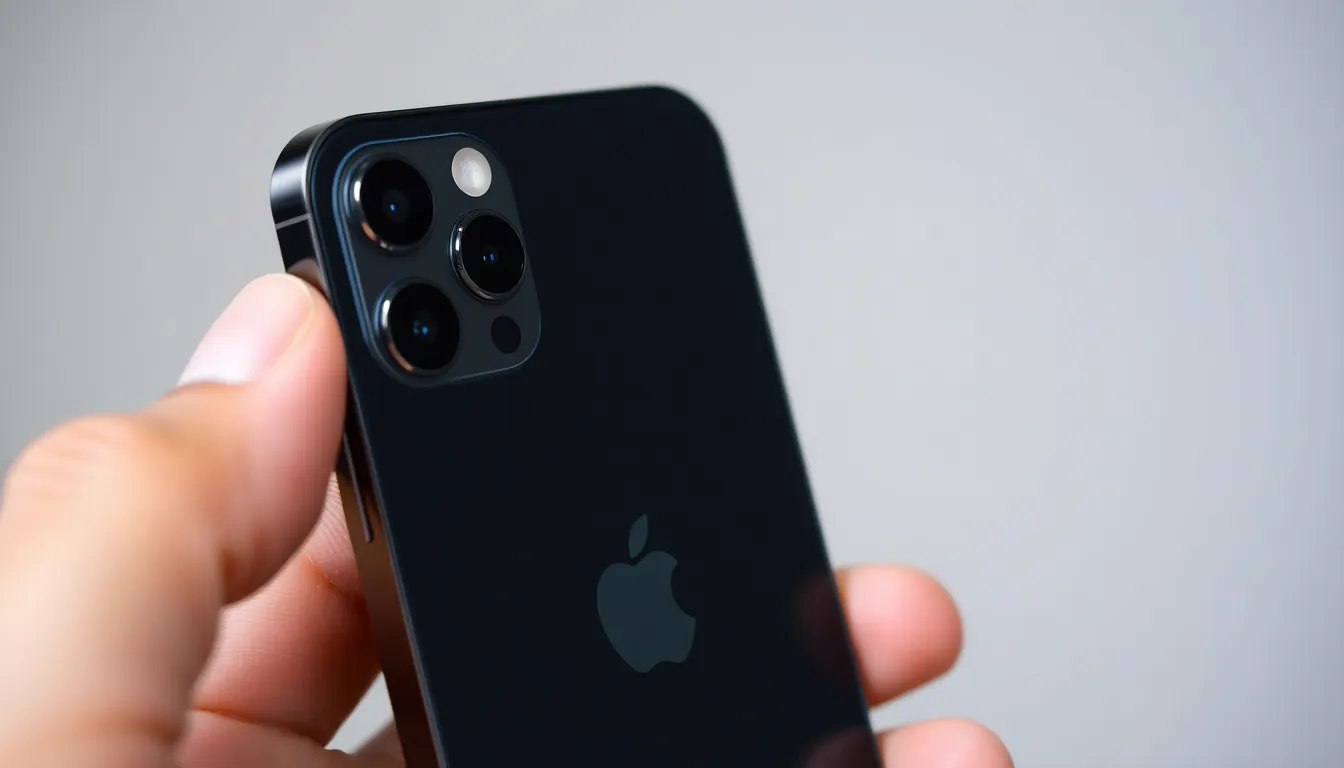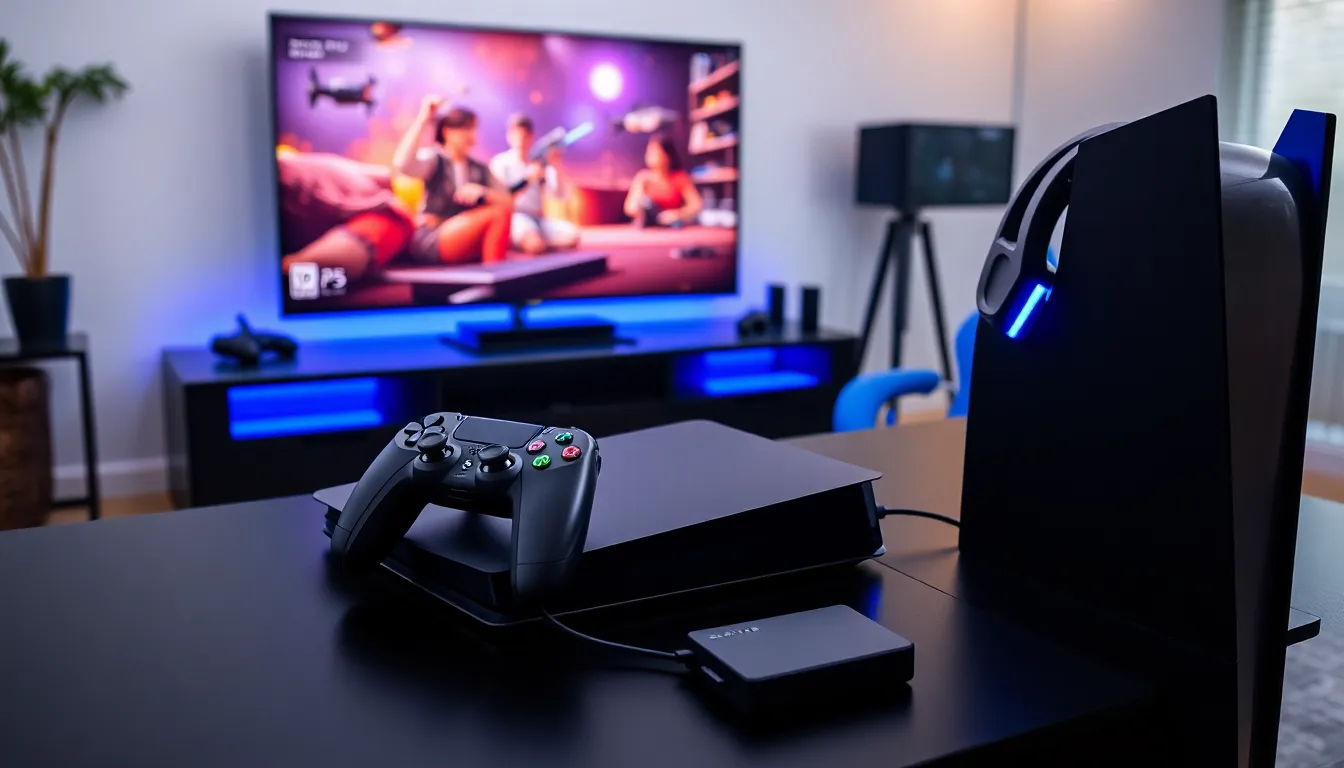Is your iPhone 13’s volume more like a whisper than a rock concert? You’re not alone. Many users find themselves cranking up the sound, only to be met with disappointing results. Whether it’s for a thrilling podcast or that catchy tune you can’t get out of your head, having the right volume can make all the difference.
Table of Contents
ToggleUnderstanding Volume Settings on iPhone 13
Users can optimize volume settings by understanding how their iPhone functions. Knowing the differences between system and app volume controls plays a crucial role in enhancing audio output.
System Volume Control
System volume refers to the overall sound output from the device. Volume buttons located on the side of the iPhone adjust this setting. Pressing the “+” button increases the sound, while the “-” button decreases it. Users can also navigate to the Settings app for additional controls. Here, they will find the “Sounds & Haptics” section, which allows for adjustments to ringer, alerts, and media volume separately. Enabling “Change with Buttons” further simplifies volume management, permitting adjustments without entering Settings.
App Volume Control
App volume can vary based on individual applications. Each app may utilize its own volume settings, impacting the user experience. For instance, music apps and video players feature dedicated volume sliders. Users should check these sliders directly within the app when sound seems low. In addition, some apps have their own settings menus, offering further customization. Ensuring permissions are granted for background audio often enhances overall performance as well. This approach helps to maximize the sound experience while using various applications.
Physical Controls for Increasing Volume

Users can quickly adjust the sound levels on their iPhone 13 using physical controls. Familiarizing yourself with these controls enhances the audio experience significantly.
Volume Buttons
Press the volume up button located on the left side of the device to increase the sound. This button immediately adjusts the overall system volume. Users can also see the volume indicator on the screen while pressing these buttons. Holding the volume up button provides a more gradual increase, allowing for precise adjustments. In scenarios where sound is low, consistently using the volume buttons provides a straightforward solution.
Ring/Silent Switch
The ring/silent switch, found above the volume buttons, controls sound notifications. Ensure this switch is set to the ring mode to hear alerts and notifications. A quick glance at the switch’s position confirms whether the device is silent or not. If the switch shows orange, the device is in silent mode, which mutes sounds. Users may overlook this switch but adjusting it is vital for ensuring audio output is as intended. Path through these controls leads to an improved listening experience on the iPhone 13.
Adjusting Volume in Settings
Adjusting volume settings on the iPhone 13 enhances audio control for a better listening experience. Various options within the Settings can address specific needs.
Accessibility Settings
Accessibility settings provide additional volume control options. Go to Settings, then tap Accessibility. Select Audio/Visual to find features like Mono Audio and Sound Balance. These adjustments help users with hearing differences tailor audio output. Ensuring the audio output meets the user’s needs is essential for maximizing the iPhone’s potential.
Media and Call Volume Adjustments
Different controls manage media and call volume on the iPhone 13. Navigate to Settings and select Sounds & Haptics for system volume adjustments. The slider under Ringer and Alerts determines ringer volume. Use the volume buttons during calls to adjust call volume dynamically. Media apps often possess their own volume settings, which may require independent adjustments to achieve the desired listening experience. Keeping these settings optimized maximizes satisfaction.
Tips for Optimizing Sound Quality
Optimizing sound quality on the iPhone 13 can significantly enhance the listening experience. Several strategies can improve audio output, offering richer sound across various applications.
Using Equalizer Settings
Adjusting equalizer settings fine-tunes audio performance to suit personal preferences. Users can access these settings by navigating to Settings, then Music, followed by EQ. Various presets, like Rock or Classical, cater to different music genres, allowing for customized sound. Experimenting with these options can bring out desired vocals or instrumentals in songs. Fine-tuning the equalizer ensures a more immersive and satisfying listening session.
Avoiding Obstructions
Ensuring speaker openings remain clear optimizes sound quality. Dust or debris can muffle audio, making it vital to check for blockages. Users should also avoid covering speakers with cases or fingers when using the device. Proper placement of the iPhone during playback enhances audio clarity. Keeping the phone in an open space allows sound to disperse effectively, leading to a richer auditory experience.
Improving the volume on an iPhone 13 can significantly enhance the overall audio experience. By understanding the various volume controls and settings, users can achieve optimal sound levels for music and podcasts. Familiarizing oneself with physical controls like the volume buttons and the ring/silent switch ensures quick adjustments when needed.
Additionally, utilizing the Accessibility settings and equalizer options allows for a more personalized audio experience. Users should also be mindful of potential obstructions that could affect sound quality. With these strategies in place, iPhone 13 users can enjoy a richer and more immersive listening experience.






